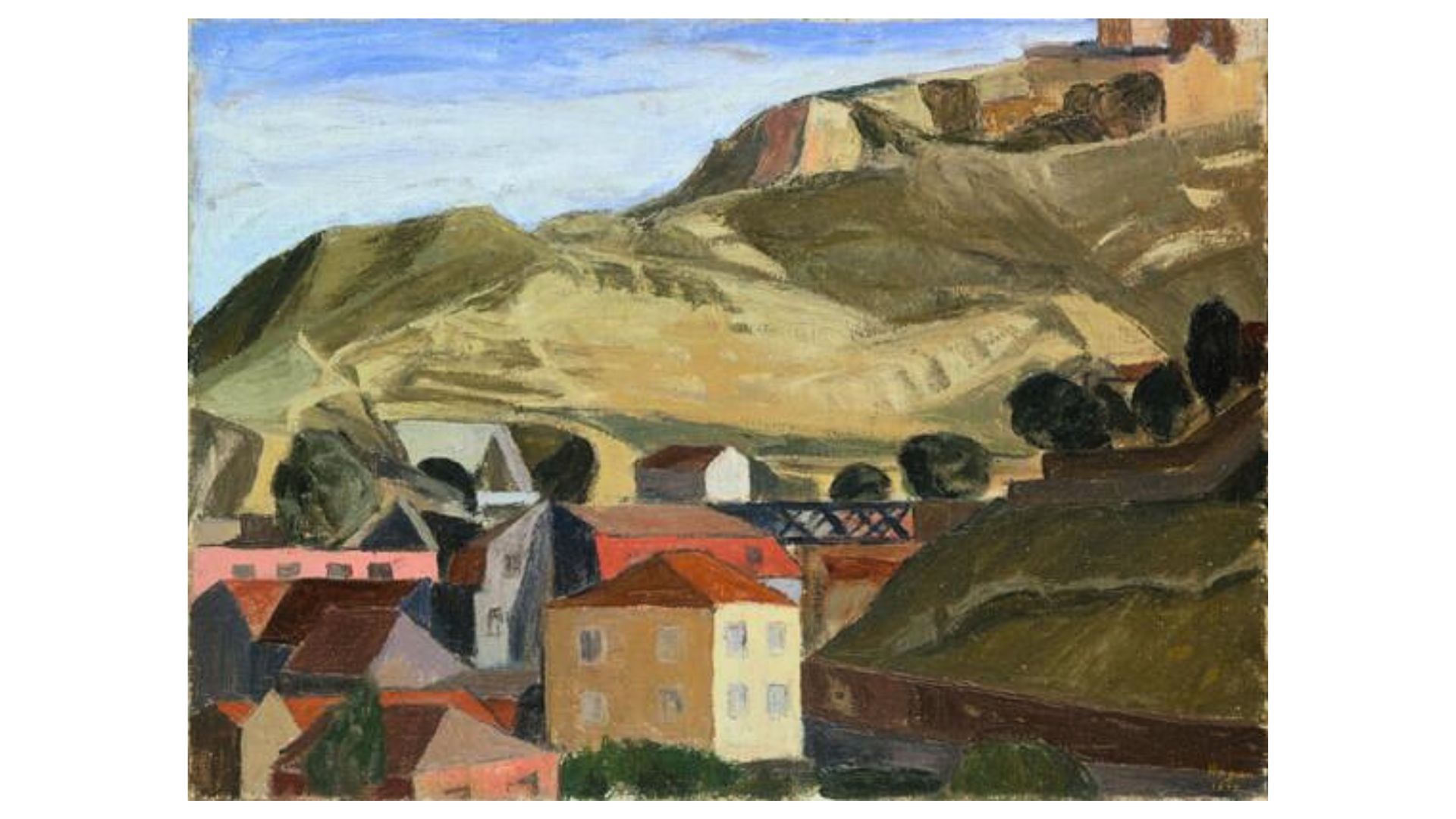From Irish descent, João Navarro Hogan was born in Lisbon on February 4th, 1914, into a family of painters. He is represented in several collections and museums, namely the Soares dos Reis National Museum, in Porto, the Chiado Museum and the Calouste Gulbenkian Foundation Modern Art Centre, in Lisbon.
He attended the general course at Escola Superior de Belas Artes de Lisboa from 1930 to 1931. Disbeliever of academic education, he left school.
Certain of his vocation as a painter, he remained self-taught, practicing painting alongside carpentry – his profession since 1930 and for more than 20 years. From this activity he learnt the rigour, precision and premeditation, characteristics that marked his work’s process as a painter. He was a student of Frederico Ayres and of Mário Augusto in 1937, on the night classes of the National Society of Fine Arts, it was in Van Gogh and in Cézanne that he found his first real masters.
Choosing the landscape as a theme by excellence, he interprets it exhaust and obsessively during five decades: “My landscape is born within and beneath the earth. The sky never interested me, and sometimes I even cut it off” (João Hogan, 1985). In the 1930s he learnt lessons from first generation Portuguese naturalists and from Cézanne’s constructed painting.
Painting outdoors on the outskirts of Lisbon and later on the Portuguese Beira Baixa region, he soon created his own style, marking his isolated course on the national artistic scene. With solid and rigorous forms, built during the search for synthesis, his unmistakable landscapes show a deep interest in the vastness and rudeness of the earth. Representing uninhabited places, they exude a silence full of meanings, emphasized by the absence of the human figure.
In 1957, he started working on engraving, under the influence of William Hayter, of whom he was a student. If the first engravings, made on wood, still have a realistic nature, the engravings on copper – including the chance provided by acid and the influences of surrealism – reach an enormous level of unreality, fantasy and even humour. Dedicating himself to this technique until 1975, he created an extremely lyrical work, of enormous diversity, truly autonomous from the work of a painter.
Founding member of the Sociedade Cooperativa de Gravadores Portugueses in 1957, he later directed engraving courses there. He created illustrations for books from 1960 onwards.
Chosen in 1971 to make one of the paintings that decorate the café A Brasileira, in Chiado, in Lisbon, he created a group 5 + 1 in 1976, which he exhibited the same year in Lisbon and Vienna, with the painters Teresa Magalhães, Júlio Pereira, Sérgio Pombo, Guilherme Parente and the sculptor Virgílio Domingues.
Image Text: Oil on canvas Alto dos sete moinhos (High of the Seven Mills,1954) by João Hogan @Museu Nacional Soares dos Reis
Cover Image: Oil on canvas Self-Portrait (1959) by João Hogan @Centro de Arte Moderna de Lisboa

